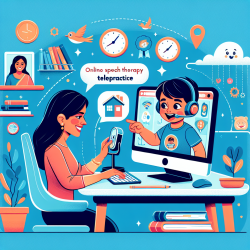Understanding the Link Between Personality and Noise Tolerance
As a speech-language pathologist, understanding the unique needs of your clients is paramount. Recent research has shed light on an intriguing connection between personality types and acceptable noise levels (ANLs), which could revolutionize how we approach hearing aid success. This blog delves into the findings of "The Relationship between Personality Type and Acceptable Noise Levels: A Pilot Study" and explores how these insights can enhance your practice.
Key Findings from the Study
The study examined the correlation between ANLs and personality dimensions as measured by the Big Five Inventory and the Myers-Briggs Type Indicator. Forty young adults with normal hearing participated, and their ANLs were measured alongside their personality traits.
- Openness: Individuals scoring higher in openness were more likely to accept higher levels of background noise, indicating lower ANLs.
- Conscientiousness: Those with higher conscientiousness scores tended to accept less background noise, resulting in higher ANLs.
No significant correlations were found between ANLs and the Myers-Briggs personality types, suggesting the Big Five Inventory may be more predictive in this context.
Implications for Practitioners
Understanding these correlations can be invaluable for audiologists and speech-language pathologists. Here's how you can implement these findings in your practice:
- Personalized Counseling: Tailor your counseling sessions based on the client's personality. For instance, clients with high openness may require less counseling about noise expectations.
- Technology Recommendations: Recommend advanced hearing aid technologies, like digital noise reduction, for clients with high conscientiousness who may struggle with background noise.
- Predicting Hearing Aid Success: Use personality assessments as a tool to predict which clients are likely to be successful full-time hearing aid users.
Encouraging Further Research
While this pilot study offers significant insights, further research is needed to explore these relationships in individuals with hearing impairments. Additionally, incorporating the Big Five Inventory into clinical settings could provide more personalized care and better outcomes for clients.
Conclusion
The relationship between personality and acceptable noise levels is a promising area of research that can enhance our understanding of hearing aid success. By integrating these findings into practice, audiologists and speech-language pathologists can provide more tailored and effective care.
To read the original research paper, please follow this link: The Relationship between Personality Type and Acceptable Noise Levels: A Pilot Study.










